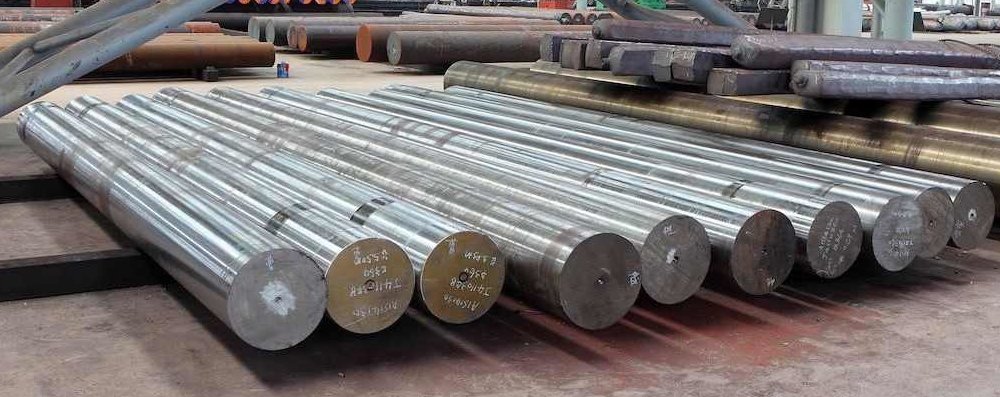Introduction
C45 is a medium-carbon steel grade that provides an excellent balance between hardness, strength, and wear resistance. It is often used in mechanical and automotive applications that require medium to high-strength materials. With high tensile strength and good machinability, C45 can be heat treated to provide a wide range of mechanical properties. This makes it ideal for a variety of applications in machinery and other industrial equipment.
Uses/Applications of C45 Grade:
- Shafts: Used in machinery and automotive shafts that require moderate wear resistance.
- Gears: Ideal for medium-duty gears that require both strength and wear resistance.
- Axles and spindles: Axles and spindles for automotive and industrial machines.
- Pins: Suitable for high-strength pins used in heavy-duty machinery.
- Bolts and nuts: Strong bolts and nuts used in engineering applications.
Properties of C45 Grade:
- Medium carbon steel with improved mechanical properties over low-carbon steels.
- Good tensile strength and hardness, suitable for moderate wear resistance applications.
- Good machinability in the normalized or annealed state.
- Excellent hardenability when heat treated.
- Moderate weld ability with appropriate precautions.
- Excellent fatigue resistance under cyclic loads.
- Crankshafts: Used in automotive engines for crankshafts.
- Machine parts: For all general mechanical parts requiring medium to high strength.
Chemical Composition (Typical):
| Element | Content (%) |
| Carbon (C) | 0.42 – 0.50 |
| Manganese (Mn) | 0.60 – 0.90 |
| Silicon (Si) | 0.10 – 0.35 |
| Sulfur (S) | ≤ 0.05 |
| Phosphorus (P) | ≤ 0.05 |
| Iron (Fe) | Balance |
Mechanical Properties (Typical in Normalized Condition):
| Property | Value |
| Tensile Strength | 600 – 750 MPa |
| Yield Strength | 350 MPa min |
| Elongation (in 50 mm) | 16% min |
| Impact Strength (Charpy V-notch) | 40 J min |
| Hardness (Brinell) | 170 – 250 HB |
| Hardness (After Hardening and Tempering) | 300 – 330 HB |
Physical Properties:
| Property | Value |
| Density | 7.85 g/cm³ |
| Modulus of Elasticity | ~205 GPa |
| Thermal Conductivity | ~50 W/m·K |
| Specific Heat Capacity | ~480 J/kg·K |
| Electrical Resistivity | ~0.16 µΩ·m |
Forging:
- Forging Temperature Range: 950°C – 1200°C.
- Forge at 1100°C to 1200°C for best results, ensuring uniform heating.
- Do not forge below 850°C to avoid embrittlement and internal cracks.
- Post-forging cooling should be slow to avoid cracking and maintain dimensional integrity.
Heat Treatment:
- Annealing: Heat to 680°C – 700°C, hold, and cool slowly to relieve internal stresses and increase machinability.
- Normalizing: Heat to 820°C – 880°C, air cool to refine grain structure and increase toughness.
- Hardening: Heat to 830°C – 860°C, then quench in oil or water depending on section size for maximum hardness.
- Tempering: Temper at 550°C – 650°C after hardening to adjust hardness and toughness as required.
Dimensional Tolerances:
- Hot Rolled Bars: Conforming to BS 970 or similar standards, with standard tolerances.
- Cold Drawn Bars: Achieving tighter dimensional tolerances, ideal for precision applications.
- Forged Bars: Custom tolerances available for specific needs.
- Tolerances for straightness, roundness, and flatness available as per customer specifications.
Machinability:
- Good machinability in normalized or annealed condition.
- Post-hardening, machining requires harder tooling such as carbide cutters.
- Use of cutting fluids is essential to improve surface finish and tool life.
- Ideal for turning, milling, drilling, and threading operations.
Corrosion Resistance:
- Moderate corrosion resistance in untreated form.
- Not suitable for highly corrosive environments; requires protective coatings for outdoor or marine applications.
- Galvanizing, painting, or electroplating is recommended for exposed parts.
Weldability:
- Moderate weldability, although preheating to 150°C – 250°C is advisable for thicker sections.
- Use of low-hydrogen electrodes is recommended to avoid cracking.
- Post-weld heat treatment may be required to restore mechanical properties and relieve residual stresses.
- Welding in the annealed or normalized condition is easier than in hardened states.
Available Form:
- Hot Rolled Bars
- Cold Drawn Bars
- Precision Ground Bars
- Forged Bars
- Flat Bars
- Custom shapes and sizes available based on customer specifications.
- Supplied in normalized, annealed, or quenched and tempered conditions as per application requirements.
Conclusion:
C45 Carbon Steel is a highly versatile medium-carbon steel offering an excellent balance of strength, toughness, and machinability. It is suitable for various applications requiring moderate strength and durability, such as automotive and industrial components. Proper heat treatment enables it to achieve high wear resistance and mechanical performance. With moderate corrosion resistance and good weldability, C45 is widely used in industries demanding high-strength materials for critical components.
Related Products :20C8, ASTM A36, 20MN2, 55C8, 40C8, C45, ASTM SA-105, C50, C20, C55, EN3B, C55 Mn2, C60, C45, EN9, EN8, EN8D, IS 2062, EN43B, S355J2G3, S40C, SAE 1010, SAE 1018, ST52.3, 20MN2, Maps


